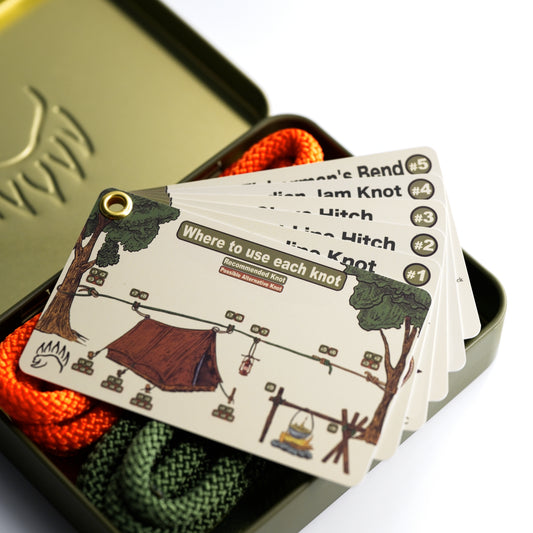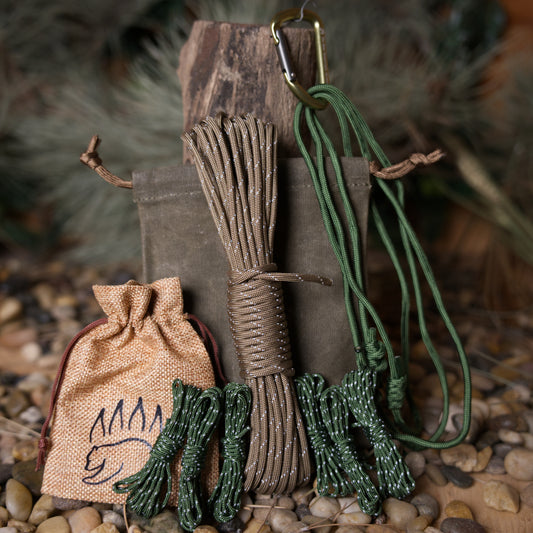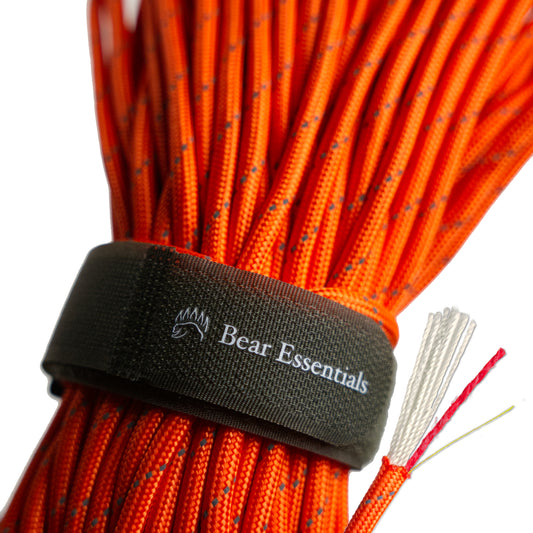How to Tie the Constrictor on a Bight (Mid Line)
Usage
The Constrictor on a Bight (Mid Line) is commonly used to tightly bind objects mid-rope, such as gear or poles, in bushcraft, camping, and utility tasks. Unlike the standard Constrictor Knot, which uses the rope’s end, this variation is tied in the middle, offering flexibility for securing loads without cutting the rope. Its powerful grip suits demanding applications, but it can jam under heavy tension. This knot is ideal for mid-line fastening needs.
Why Learn the Constrictor on a Bight (Mid Line)?
Its mid-line design delivers a tight, secure hold. This knot is a versatile choice for outdoor and utility tasks requiring strong binding.
- Powerful grip: Clamps objects tightly, preventing slippage.
- Mid-line utility: Ties without needing the rope’s ends, preserving length.
- Versatile use: Suits bushcraft, camping, marine, and utility applications.
- Durable binding: Holds firm under sustained or heavy loads.
- Simple technique: Adapts the Constrictor Knot for mid-rope use.
Common Uses
-
Hoisting:
- Binds ropes mid-line for lifting equipment or tools.
- Secures loads in hoisting systems.
-
Scouts:
- Ties mid-line lashings for pioneering projects.
- Secures gear in camp setups.
-
Arborist:
- Binds ropes mid-line for rigging or climbing support.
- Secures branches during tree work.
-
Firefighting:
- Ties utility ropes mid-line for equipment handling.
- Binds gear for secure transport.
-
Bushcraft:
- Fastens tarps or shelters mid-rope.
- Secures mid-line bundles for gear or food storage.
-
Camping:
- Ties tarps mid-line for wind-resistant shelters.
- Binds gear for compact packing.
-
Boating/Marine:
- Secures lines mid-rope to poles or cleats.
- Binds ropes for mid-line rigging tasks.
-
Utility:
- Ties mid-line bundles for household organization.
- Secures cords in workshops or outdoor setups.
ABOK Number
(Ashley Book of Knots)
Other Names
Category
|
Notable Features
- Powerful grip: Tightly clamps objects, preventing slippage.
- Mid-line functionality: Ties without using the rope’s ends, preserving rope length.
- Versatile applications: Suitable for various outdoor and utility tasks.
Variations
(No variations mentioned; section left blank.)
Similar Knots
Constrictor Knot vs. Constrictor on a Bight (Mid Line)
- Pros: Simpler to tie using the rope’s end for basic binding.
- Cons: Requires rope end, less flexible for mid-line applications.
Double Constrictor Knot (Symmetrical) vs. Constrictor on a Bight (Mid Line)
- Pros: Tighter and more balanced for heavy binding tasks.
- Cons: Harder to untie and typically uses the rope’s end.
- Learn the double constrictor knot.
Butcher’s Knot vs. Constrictor on a Bight (Mid Line)
- Pros: Quick to tie for light binding tasks like parcels.
- Cons: Less secure and slips under heavy loads compared to the Constrictor.
Square Knot vs. Constrictor on a Bight (Mid Line)
- Pros: In the square knot comparison, it is simple and widely known for basic binding.
- Cons: Weak and prone to slipping, unlike the Constrictor’s tight grip.
History
The Constrictor on a Bight (Mid Line), a variation of the Constrictor Knot, likely originated in maritime contexts where secure binding was critical for cargo and rigging. Referenced in The Ashley Book of Knots (#1249) as part of the Constrictor family, its mid-line adaptation offers flexibility for modern bushcraft, camping, and utility tasks. Its powerful grip has made it a staple in diverse outdoor and professional settings.
Source: The Ashley Book of Knots
Security Level
The Constrictor on a Bight (Mid Line) is highly reliable for mid-line binding, delivering a tight, slip-resistant hold when tied correctly. Its design ensures even pressure, but it can jam under heavy or prolonged tension, making untying difficult. For slippery ropes, ensure proper technique and consider additional wraps for enhanced grip.
Downsides
- Jamming risk: Can be hard to untie after heavy tension.
- Not for dynamic loads: Unsuitable for tasks requiring frequent adjustments.
Structure
- Form a bight in the middle of the rope and wrap it around the object.
- Cross the bight over the standing parts, creating a loop around the object.
- Pass the bight under the standing parts and over the initial wrap, forming a second wrap.
- Tuck the bight under the crossed wraps, ensuring symmetry for a tight grip.
- Pull both standing parts to tighten, adjusting to secure the knot evenly.
Pro Tip: Ensure the bight is long enough for easy tucking and tightening.
FAQ
Is the Constrictor on a Bight (Mid Line) strong enough for heavy loads?
Yes, it’s reliable for binding heavy loads mid-rope, but ensure proper tying and rope strength.
What ropes work best for the Constrictor on a Bight (Mid Line)?
Strong, smooth ropes like nylon or polyester ensure tight binding and durability.
How does the Constrictor on a Bight (Mid Line) compare to the standard Constrictor Knot?
It’s more versatile for mid-line use but retains the same tight grip.
Can the Constrictor on a Bight (Mid Line) be used for climbing?
Yes, for non-life-support tasks like securing gear, but not for primary anchors.
Why choose the Constrictor on a Bight (Mid Line) over a zip tie?
It’s reusable, allows mid-rope binding, and leaves no trace in outdoor settings.
Important Notes on Safety
Common failure points include improper bight alignment or using a weak rope, which can reduce grip. Always verify the knot is used for static binding tasks and correctly tied.
- Inspect ropes for wear or damage before tying.
- Ensure the bight is tucked tightly for maximum hold.
- Practice tying in low-risk settings to ensure proficiency.









